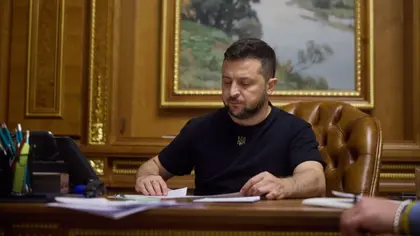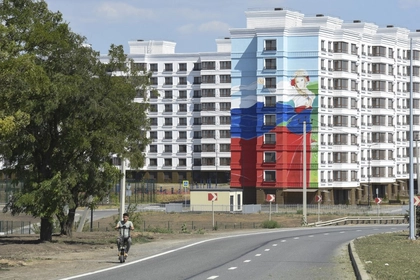Ukraine announced it will allocate 21.6 percent of the country’s gross domestic product (GDP) to defense spending in 2024, a decision approved by President Volodymyr Zelensky in a decree signed last week.
According to the Cabinet of Ministers, nominal GDP in 2024 will amount to Hr.7.8 trillion ($214 billion).
JOIN US ON TELEGRAM
Follow our coverage of the war on the @Kyivpost_official.
Of that, Hr.1.68 trillion ($46 billion) is planned for Ukraine’s defense as Russia’s full-scale invasion continues. That’s a Hr.113 billion ($3.1 billion) increase from last year.
Ukraine’s finance ministry wrote in a report that the government is obligated to prioritize defense spending.
“First of all, this is the Defense Ministry, as well as the Interior Ministry,” Oleksiy Honcharenko, a member of the Budget Committee of the Verkhovna Rada, told Kyiv Post.
“That is, we are talking about the salary of military personnel. And in general – the whole complex related to the war and the provision of the Defense Forces of Ukraine, which consist of the National Guard, the Border Guard service, and the SBU (Ukraine’s Security Service).”
The lawmaker said that the financing of the defense and security sector also considers the distribution of funds to civil security agencies – that is, law enforcement agencies, such as the police, prosecutor’s office, anti-corruption bodies, and so on.
However, funds for the judiciary and support for war veterans are provided for in a separate article and are not included.

Ukraine’s Usyk Beats Fury in Heavyweight Championship Rematch
Upwards of Hr.1 trillion ($28 billion) is earmarked to pay for the “proper maintenance of personnel” (i.e., salaries).
Some Hr.440 billion ($12 billion) is allocated for the reform and development of the military-industrial complex, missiles, and the creation of a missile defense system.
Of these, Hr.48.1 billion ($1.3 billion) is allocated in a separate line for the purchase of unmanned aerial vehicles.
“But it’s too early to talk about exact figures. The budget has not yet been adopted. Now this is a decision of the National Security and Defense Council, promoted by the government, the Verkhovna Rada for approval,” Honcharenko said.
“And we must not forget that this is a war, so everything is changing quickly. In addition to the fact that the budget will be rewritten many more times during the year, some of the figures will be classified as ‘secret’ for security reasons,” he said.
According to the draft budget for 2024, the general fund’s own revenues will amount to Hr.1.6 trillion ($44 billion), and expenditures – Hr.3.1 trillion hryvnias ($85 billion). In other words, more than half of the budget revenues will be spent on the country’s defense.
Answering the question of what revenues the Ukrainian budget will consist of next year, Honcharenko said that Ukraine has a “very simple budget” – everything that the country earns goes to war. Other issues are financed by partners: e.g., the US, EU, UK, Canada, and Japan.
“The budget is a common ‘pot,’ from which it is determined what and how much funds are allocated. In other words, the concept of ‘protected item’ (when the costs of separately prescribed lines do not depend on unstable ways of filling, such as confiscation of Russian assets, etc.) is no longer relevant. Since everything is sent, except for rare exceptions, first to the general budget,” Honcharenko stressed.
For comparison, in Israel, which has been in a state of existential conflict for a long time, back in 2021, the military budget was approximately 5 percent of GDP.
However, before the outbreak of war and the invasion of Hamas, these expenditures traditionally increased by more than 1 percent of GDP during the year due to additional spending on special services.
According to Oleh Vyshnyakov, Honorary Consul of Israel in western Ukraine, in 2021, together with the hidden costs of mobilizing resources – human, land, etc. – military spending increased to 13 percent of GDP, which is equivalent to $400 billion per year. In other words, 5-7 percent of the annual turnover of the entire Israeli economy.
At the same time, in the 1970s, at the peak of the war with the Arab world, Israeli defense was 30 percent of GDP.
You can also highlight the text and press Ctrl + Enter






